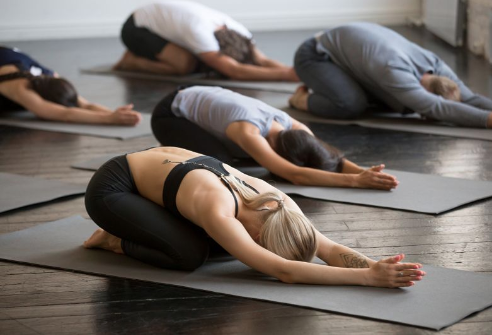Hatha yoga: why it is popular and how it is useful

What is hatha yoga
Hatha is a general term for any type of yoga in which physical postures are practiced. Most of the types of yoga taught in yoga studios actually come from hatha yoga. Studios often use the term to describe their beginner classes, which are slower paced and focused on teaching the basics. Hatha yoga poses for beginners are often aimed at developing flexibility, working with breathing, and maintaining balance.
The word “hatha” consists of two syllables: “Ha” means “Sun” and “Tha” means “Moon”. Hatha is aimed at uniting the solar and lunar energies in the body, balancing the male and female sides to achieve inner harmony and happiness.
Benefits of hatha yoga
Many people do yoga to relax and relieve stress. Many studies have actually proven that the practice of hatha yoga reduces the levels of cortisol (the stress hormone) in the body. One way to reduce stress and relieve tension in the body is controlled breathing, also known as pranayama practice. Regular yoga practice improves the quality of sleep.
Hatha yoga also benefits the physical body. Practice perfectly strengthens the muscles of the whole body, especially in the core and along the spine. In turn, this improves posture and helps you perform any other physical activity better. For example, running, which is important, reduces the likelihood of injury. In addition to strengthening the body, hatha yoga increases overall flexibility by lengthening the muscles and engaging the joints.
Regular practice of hatha yoga improves metabolism, circulation of lymphatic fluid, hormonal balance, which has a healing effect on the entire body. Yoga becomes the prevention of many serious diseases: varicose veins, hypertension, heart attacks, incontinence, diabetes, Alzheimer’s disease and many others.
Hatha yoga is enjoyed by people of all skill levels because of the tangible benefits to both the physical body and the emotional state. For beginners, this is the best kind of practice. The classes teach the basic postures of hatha yoga, as well as breathing techniques (pranayama). The poses are performed at a slower pace than in other types of yoga, which helps them to understand and master. Hatha yoga also creates a solid foundation for further development in yoga.
Hatha yoga: contraindications
Hatha yoga can be practiced by anyone, regardless of age and build. A few contraindications include:
- feeling of general weakness and heaviness;
- problems with the musculoskeletal system;
- serious injuries of the spine or head in the past;
- postoperative period;
- any infectious disease, fever.
There are also contraindications for certain asanas (exercises), which the instructor talks about during the lesson. For example, inverted asanas should not be done during menstruation. There are contraindications for hypertensive patients. Therefore, it is better to warn the instructor about health problems.
Hatha yoga can be practiced even by pregnant women, in each trimester there will be contraindications for individual asanas. For pregnant women, separate classes are offered, you should not go to the general group.
How to Start Hatha Yoga: Basic Tips
Start gradually
As in any other physical practice, you need to start practicing gradually. The body needs to get used to physical activity. You can start with five minutes, gradually adding time. It’s better than nothing.
Move from simple to complex
Do not immediately try to perform complex asanas. Start simple and gradually add complexity.
Focus on yourself
This is especially true in group classes. It doesn’t matter if you can touch your toes or balance on your hands, only personal progress matters. The best thing you can do is to fully focus on your body and the sensations in it.
Find what motivates you in yoga
It can be a yoga studio, a personal trainer, some kind of YouTube channel or blogger.
Hatha yoga: where to start
Choose a place to practice
It can be a yoga club, a personal trainer, a fitness club, online classes. It is better to start the practice under the guidance of an instructor who will help you build up asanas, give individual recommendations depending on the constitution and level of physical fitness.
Make a schedule for the week
Depending on whether you work out in the studio, in a fitness club or on your own, plan a schedule for the week. Schedule classes and think about meals right away. Three hours before the practice, it is advisable not to eat heavy food. Light and easily digestible food is allowed a maximum of one and a half hours before class. If you can exercise in the morning on an empty stomach, this is ideal.
Think about comfortable clothes for exercising.
It is convenient to practice in leggings and a top. Beautiful clothes, as you know, additionally motivate for classes. Preferably barefoot.
A mandatory attribute for classes is a yoga mat, best of all personal. The length of the rug is your height + 10 centimeters; the standard width is 60 cm, but if you have a large build, choose a rug 80 cm wide. The optimal thickness is 6-8 mm. On such a rug, you will not freeze and experience discomfort in the emphasis on the knee. Thicker mats make it harder to balance. It is important that the mat does not slip, otherwise, in asanas, the legs and arms will move apart in different directions. The non-slip mat material is rubber.
And remember that yoga is a journey, not a destination.